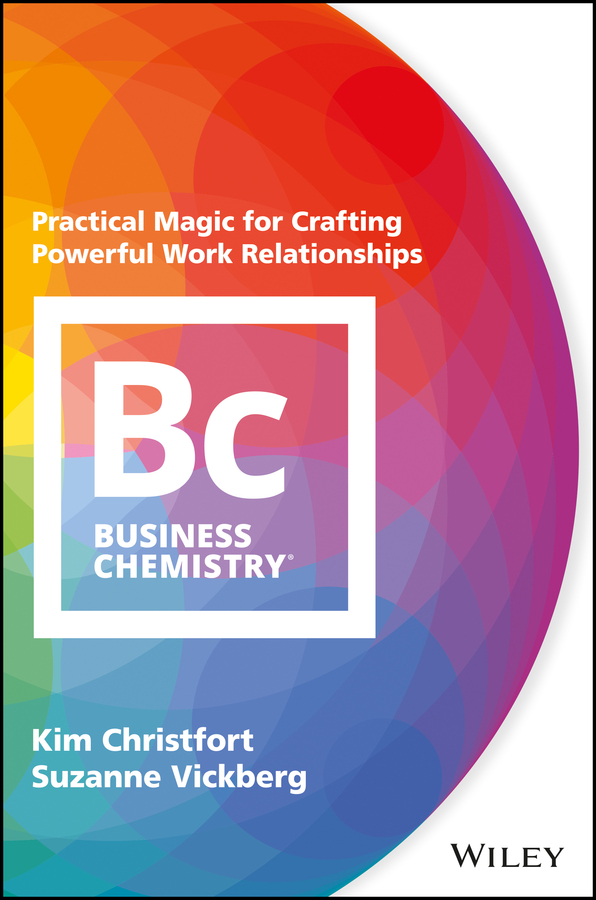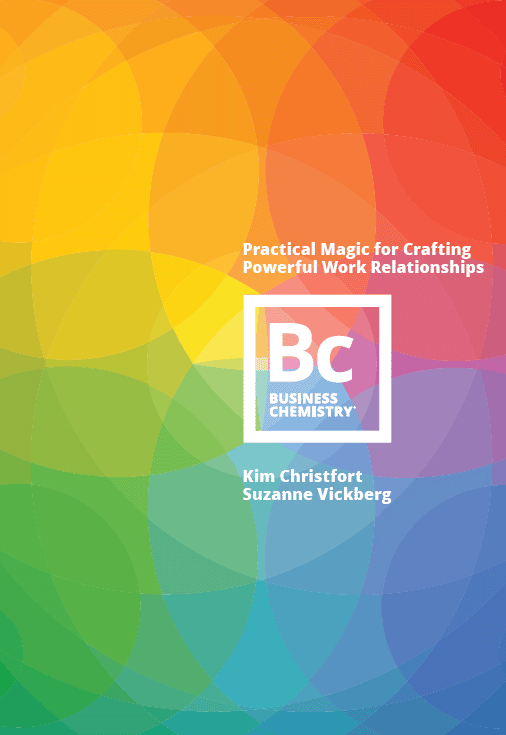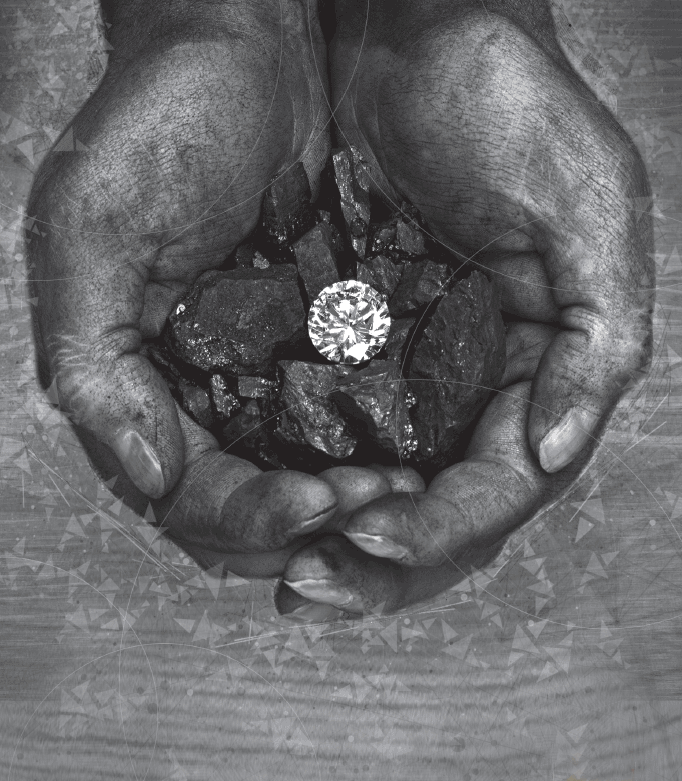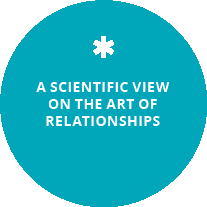


Page Layout Designers: Patricia Mozetic and Randy Okamura
Copyright © 2018 by John Wiley & Sons, Inc. All rights reserved.
Published by John Wiley & Sons, Inc., Hoboken, New Jersey.
Published simultaneously in Canada.
No part of this publication may be reproduced, stored in a retrieval system, or transmitted in any form or by any means, electronic, mechanical, photocopying, recording, scanning, or otherwise, except as permitted under Section 107 or 108 of the 1976 United States Copyright Act, without either the prior written permission of the Publisher, or authorization through payment of the appropriate per-copy fee to the Copyright Clearance Center, Inc., 222 Rosewood Drive, Danvers, MA 01923, (978) 750-8400, fax (978) 646-8600, or on the Web at www.copyright.com. Requests to the Publisher for permission should be addressed to the Permissions Department, John Wiley & Sons, Inc., 111 River Street, Hoboken, NJ 07030, (201) 748-6011, fax (201) 748-6008, or online at http://www.wiley.com/go/permissions.
Limit of Liability/Disclaimer of Warranty: While the publisher and author have used their best efforts in preparing this book, they make no representations or warranties with respect to the accuracy or completeness of the contents of this book and specifically disclaim any implied warranties of merchantability or fitness for a particular purpose. No warranty may be created or extended by sales representatives or written sales materials. The advice and strategies contained herein may not be suitable for your situation. You should consult with a professional where appropriate. Neither the publisher nor author shall be liable for any loss of profit or any other commercial damages, including but not limited to special, incidental, consequential, or other damages.
For general information on our other products and services or for technical support, please contact our Customer Care Department within the United States at (800) 762-2974, outside the United States at (317) 572-3993 or fax (317) 572-4002.
Wiley publishes in a variety of print and electronic formats and by print-on-demand. Some material included with standard print versions of this book may not be included in e-books or in print-on-demand. If this book refers to media such as a CD or DVD that is not included in the version you purchased, you may download this material at http://booksupport.wiley.com. For more information about Wiley products, visit www.wiley.com.
Business Chemistry is the registered trademark of Deloitte Touche Tohmatsu Limited.
The bar graphs in Chapters 10 and 11 are copyrighted works of Deloitte Touche Tohmatsu Limited.
Library of Congress Cataloging-in-Publication Data
Names: Christfort, Kim, 1974- author. | Vickberg, Suzanne, 1971- author.
Title: Business chemistry : practical magic for crafting powerful work relationships / Kim Christfort, Suzanne Vickberg.
Description: Hoboken : Wiley, 2018. |
Identifiers: LCCN 2018007684 (print) | LCCN 2018010237 (ebook) | ISBN 9781119501640 (epub) | ISBN 9781119501626 (pdf) | ISBN 9781119501565 (hardback)
Subjects: LCSH: Leadership. | Employee motivation. | Career development. | BISAC: BUSINESS & ECONOMICS / Management. | BUSINESS & ECONOMICS / Leadership. | BUSINESS & ECONOMICS / Accounting / General.
Classification: LCC HD57.7 (ebook) | LCC HD57.7 .C523 2018 (print) | DDC 658.3/14–dc23
LC record available at https://lccn.loc.gov/2018007684
Suzanne
To my mom and dad, who have shown me I can go anywhere, do anything, and be anyone I want.
Kim
To my family, for their unwavering love and support.
I spend much of my time on the road, meeting and working with business leaders from around the world. The insights I gain—about the world, about people, even about myself— are a constant source of learning and inspiration.
Probably the most valuable insight for me thus far concerns what it takes to effectively connect with other people. And it is not what you might think.
While my experience has shown me that, as human beings, we are more alike than we are different, it has also helped me to see that similarities are not the only basis for connection. It is when we understand and effectively navigate our differences that some of the most meaningful connections are made. That is what makes Business Chemistry such an effective tool.
Consider all of the different types of people you encounter in the course of your day-to-day interactions. People who prioritize diplomacy, and others who prefer candor; people who focus on the big picture, and others who live in the details; people who like the slow play, and others who want to cut to the chase. Business Chemistry provides a framework for identifying these different types of people so that you know quickly what approach to take and when. Have you ever tried to walk through a detailed slide deck with a big-ideas person? Not fun. And more importantly, not effective.
By helping to identify people's working styles, Business Chemistry produces the kind of seamless collaboration that normally takes years of working together to develop. And it does so not by forcing us to find common ground, but by drawing on the strength of our diversity as a global business community. Proof positive that people can think differently and still come together.
I know what Business Chemistry has done for my team, a robust mix of all four identified types: Pioneers, Integrators, Guardians, and Drivers (my category, which is probably not a surprise to those who know me). I would encourage everyone to add it to their bag of tricks for building highly effective relationships—both within and outside of their organizations.
It has been said that it takes all types to make the world go round. I believe that to be true, particularly when it comes to business. We need the doers and the dreamers, the hard drivers and the relationship builders, the extroverts and the introverts. Each has a role to play, but it's not enough for them to have a seat at the table. It's their ability to work together that completes the picture.
Punit Renjen is the chief executive officer of Deloitte Global.
Deloitte refers to one or more of Deloitte Touche Tohmatsu Limited, a UK private company limited by guarantee (“DTTL”), its network of member firms, and their related entities. DTTL and each of its member firms are legally separate and independent entities. DTTL (also referred to as “Deloitte Global”) does not provide services to clients. Please see www.deloitte.com/about to learn more about our global network of member firms.


“It's just like dating!” my colleague exclaimed as he rushed into the room. A recent divorcé, Brian had just discovered online matchmaking websites, so it was with some trepidation that I asked him, “What's just like dating?”
“Business relationships,” he replied.
At that point I was dubious about where the conversation was heading, but then he continued, saying, “It's all about the chemistry.”
Chemistry. A powerful word used to represent that magical something that can exist between people—and not just the romantically inclined. The term is applied broadly, from successful sports teams to highly rated news anchors to popular political leaders. In most cases its presence is obvious, but mysterious. It is hard to know exactly what's behind it. It's just there.
Of course, chemistry is also a branch of science that explores what matter is made of and how those ingredients interact, combine, and change. As a former pre-med student, I vividly recall my afternoons in the organic chemistry lab, carefully titrating this and heating that to create the perfect cocktail that would bring about the particular transformation I was hoping for (rather than an explosion). This other definition of chemistry pertains to the precise, analytical, and measured (literally). And yet the result still somehow feels magical.
Brian's words about business relationships made something click for me. He was right; chemistry is a huge factor in business. And not just in established working relationships, but in any interaction between people, whether they know each other well or not. Once you start looking, its presence or absence is noticeable everywhere. With that colleague you seek out when you want to riff on a new idea versus the one you avoid because he's so difficult to work with. With the client who will work with no one but you, versus the one you can't seem to click with. With the teams that achieve outsized success, versus those that churn and churn and never make progress. Time and again we've seen how chemistry can be the invisible force tilting the outcome in one direction or the other.
We often consider the great chemistry in these situations to be something we either have or don't. We think of it like luck, an abstract boon to wish for but not something to expect. However we rarely question whether there's a way we could concoct it ourselves. What if instead we viewed it as a discipline, one that explores the elements behind human interactions and how they might be brought together to minimize explosions and maximize positive outcomes? What if we took a scientific view on the art of business relationships?

That question kicked off the development of the Business Chemistry Project at Deloitte, which has become a seven-year exploration into what makes people click or clash, why some groups excel and others fumble, and how leaders can make or break team potential. What is Business Chemistry?
In short, it is an analytics-driven tool for understanding and leveraging differences between people. It has been used by hundreds of thousands of professionals around the world to build healthier teams, enhance customer engagement, and become more effective leaders
This book is dedicated to helping you use the principles of Business Chemistry to build your own powerful relationships, high-performing teams, and exceptional organizations.
As one of the original architects of the system, I'm writing this first chapter to lay some groundwork for why we developed this tool in this first place. In the rest of the book my co-author, Suzanne, will join me in sharing some of the most important ways in which people differ, and how those differences can cause conflicts between individuals and inconsistent performance on teams. Think your colleague doesn't get it? Their working style may simply be the opposite of yours. Think some of your team members lack commitment? Your team norms might be draining their energy and sapping their potential. Throughout this book we'll provide you with practical strategies for creating better business chemistry with those you work with, improving the performance of everyone involved. We'll share ideas for how to manage, motivate, and influence different types of people. We'll offer strategies for earning their trust and respect. And we'll explore how to lead your teams so that everyone can excel and deliver their best performance. But in order to get there, it helps to understand first things first.
The truth is, that early conversation I had with Brian catalyzed a mass of existing interest around this topic within our team. We had noticed that certain people in our organization were consistently outperforming the average, a trend that stayed true even when they switched from one client to another. So we embarked on an effort to better understand what made these individuals special and whether we could help others to perform like them. Our corporate sleuthing revealed that, for the most part, what these outliers were doing was similar to everyone else. They performed the same types of work, on the same size projects, with the same level of expertise. What wasn't the same was their approach to working with others. These star performers weren't just delivering services, they were building relationships—with clients, with their teams, and with one another. Not only that, but it seemed they were what you might call relationship naturals. They didn't appear to consciously think about why they should build relationships or how to build them, they just did it and did it well. They each seemed to be highly attuned to their clients' individual needs, and would frequently talk about “walking in their clients' shoes.” When we spoke with their clients, they couldn't really identify why the relationships were so strong. They would say things like, “He just gets me” or “We complement one another.”
We suspected that the secret sauce for each of these individuals was empathy. Decades of studies have shown that empathy is integral to effective human connection1, and recent research further demonstrates links between empathy and leadership performance2 3, as well as commercial success at the organizational level.4 Our high-performing people seemed to have an extra dose of this important quality, which translated into great chemistry with their clients, colleagues, and teams.
So our hypothesis about empathy was all fine and good, but now we were up against a daunting challenge. We were an organization of well over a hundred thousand people, and growing. If we wanted to scale the success of our high-empathy stars, we'd need to rely on something more than just natural empathic ability. But it wasn't immediately clear what we should do next. After all our digging, we wondered if our investigation had reached a dead end. But it turns out the answer, dear readers, was elementary.
Sadly I've forgotten much of what I learned in my college science courses, but my conversation with Brian about parallels between business and dating did unearth one relevant gem of knowledge from the depths of my brain, specifically, a fact about diamonds. See, organic chemistry hinges around the core element carbon. And in its pure state, carbon has two well-known forms, coal and diamonds. (Let's hope Santa doesn't confuse the two when he visits my house this year.)
Naturally occurring, the diamond form of carbon has always been highly valued due to its rarity. As a result, people have long been experimenting with how to transform lesser forms of carbon into high-worth diamonds. The earliest recorded attempts to do so date back to 1797.5 Then finally, in 1954, GE created the first commercially successful synthesized diamond.6 The interesting thing about these cultivated diamonds was that they weren't imitations; they were the real deal, pure carbon crystallized in isotropic 3D forms. In fact, these synthetic diamonds actually possessed some properties that made them superior to naturally formed diamonds, particularly for industrial applications, which require hardness, thermal conductivity, and electron ability.
Thinking about these various forms of carbon, I realized that our outlier performers were “diamonds in our midst.” They possessed something highly valuable and naturally occurring: gem-grade empathy. But if we wanted to raise the performance of all our people to their level, we couldn't rely on nature; we needed to follow the example of the synthetic diamond innovators and figure out a way to cultivate it. And like lab-created diamonds, our cultivated empathy would not only be authentic, we hoped, but superior to organic empathy for business applications. With that clarity, we set off on a journey to figure out how we might help our people become more empathic.
If you're going to try to cultivate empathy, it helps to first be clear about what you mean by it. We define empathy as understanding and identifying with another person's perspective. It was this ability we wanted to nurture in our leaders and professionals across the organization. But like bumper sticker advice, this seemed easier said than done. Unless you know someone really well (which often isn't the case in a business environment), you may not even be aware of what their perspective is, let alone really understand or identify with it. And as for coming straight out and asking someone to tell you all about how they see and experience the world? Awkward.
What we needed was a simple way to help people develop empathy—some clue they could detect in a business environment without asking a lot of questions. Something they could directly observe that would correlate strongly with an individual's distinct perspective. That clue turned out to be working style.
Working style is essentially your personality manifest in a business setting. It's a composite of how you process information, make decisions, connect with people, and a multitude of other facets that reflect your unique perspective. By observing whether someone's working style is more spontaneous or structured, more diplomatic or direct, more conceptual or concrete, you can start to get a pretty clear picture of their perspective on things. And while it seems obvious that individuals' working styles differ in significant ways, people often overlook these differences, or see them as nuisances to be tolerated rather than clues to be understood, appreciated, and leveraged. To cultivate empathy, you need to recognize these differences for what they are—useful signals about an individual's perspective, and the building blocks of powerful working relationships.
But in order to fuel that magical chemistry of great business relationships, you need gem-grade empathy. That requires going beyond simply acknowledging differences and building understanding, to acting on that knowledge. As it turns out, those kindergarten lessons to treat others the way you want to be treated only go so far in an environment where the way you like to think, behave, and work is different from what I like. With the kindergarten's Golden Rule in mind, we often default to our own personal working styles and assume others process information, make decisions, and connect with people the same way we do. Then we wonder why that yields mostly frustration, misunderstanding, and wasted potential.

We developed Business Chemistry to highlight some of these important differences in the name of empathy-building. Our goal was to help our people quickly identify someone's working style, understand how it's different from or similar to their own, and then to act on that knowledge by flexing their own style relative to the other person. In other words, treat others as they want to be treated. That's gem-grade empathy. Ultimately, with Business Chemistry we created a working style assessment and framework that makes practical the seemingly magical practice of crafting powerful work relationships.
Ok, we get it—the idea that people have different personalities, working styles, and ways of being is not exactly new. Since the ancient Greeks, at least, humans have tried to categorize and catalog thoughts and behaviors, feelings and preferences. And we realize that in today's modern times there is no shortage of systems, assessments, and tools available for classifying people's styles, whether in the workplace or in more personal realms, and whether serious and practical or fun and frivolous. (How many online quizzes did you take last month?) We're very aware of the ubiquity of these sorts of surveys and we often start with the following request when introducing Business Chemistry to a group: “Raise your hand if you've taken a personality or working style assessment before.” Rarely does a hand fail to rise.
But then we ask a question: “How many of you, regardless of the assessment you took, can remember what type you are and what that means?” About half the hands go down and the previously self-satisfied expressions turn a bit sheepish. And then we throw out one more question: “How many of you could guess the type of the person next to you, based on a few key observations, and would know how to tailor your interactions accordingly?” At this point eyes look down, heads begin to shake, and perhaps just one or two hesitant hands remain raised at half-mast.
Right. So the concept isn't new, and most everyone has been exposed to these kinds of tools before. However, we've found that: 1) many people don't remember what they learned about themselves much less what they learned about others, and 2) most people don't know or can't remember how to apply that information to create chemistry in their own work relationships.
This is why we set out to develop a new system—one that would be both memorable and actionable. What you'll find is that Business Chemistry is powerful not because it invalidates existing theories or reveals some groundbreaking new discovery about human nature. Quite the opposite, in fact. This system is powerful because it takes a fresh approach to an age-old topic. Built for business, it's purposely designed to be practical and sticky, distilling an often murky subject down to the essence of what really matters for people in a work environment.
The Business Chemistry types are the focus of the rest of this book, so you're about to learn all about them. For now, though, I'll tide you over with a quick summary. Do you recognize yourself or your colleagues in any of these descriptions?
 |
 Pioneers value possibilities and they spark energy and imagination. They're outgoing, spontaneous, and adaptable. They're creative thinkers who believe big risks can bring great things. |
 |
 Guardians value stability and they bring order and rigor. They're practical, detail-oriented, and reserved. They're deliberate decision-makers apt to stick with the status quo. |
 |
 Drivers value challenge and they generate momentum. They're technical, quantitative, and logical. They're direct in their approach to people and problems. |
 |
 Integrators value connection and they draw teams together. They're empathic, diplomatic, and relationship oriented. They're attuned to nuance, seeing shades of grey rather than black and white. |
© 2018. Deloitte Touche Tohmatsu Limited
Of course, we don't all fit neatly into one of these categories. In fact, we are each a unique combination of all four, and depending on the context or situation in which we find ourselves, we may demonstrate behaviors associated with any of the types. Yet most of us find that in general we strongly associate with one or two of the types and that our behavior will be relatively consistent across various situations. For ease of use in this book we'll refer to these four types, and to people resembling them, by using the simple labels of Driver, Integrator, Guardian, and Pioneer. We trust that you, as our readers, will understand that we're using a shortcut. When we refer to someone as a Driver, what we really mean is a person with lots of characteristics closely associated with the Driver type, who thinks and behaves like a Driver much of the time. While the former isn't perfectly accurate, the latter is prohibitively awkward. We thank you in advance for remembering that we're simplifying. (And speaking of simplifying, I know that some of you are really interested in the details about how the system was created and the specifics behind its application. You can find all of that in the appendix.)
Ultimately, the magic of Business Chemistry is not in the types individually, but in their combinations collectively. As you may have already discerned, Guardians and Pioneers have opposite working styles, as do Drivers and Integrators. Business Chemistry can be particularly valuable with diversity like this, helping people work across these kinds of stark differences. But even when differences are more subtle, understanding how to reconcile them and use them to your advantage is crucial for creating great chemistry.
Diversity in the broadest sense—of thought, background, or experience—is often lauded as a driver of performance.7 And most teams and organizations have some level of diversity to draw upon. But even when many different perspectives are represented, leaders often treat people as if they're all the same (that good old kindergarten lesson we mentioned earlier). As a result, they fail to tap into diversity's powerful potential. Furthermore, they inadvertently foster environments that marginalize or neglect to nurture those who are different. And we find they often don't realize they're doing this and don't recognize the negative impact it's having.
In our work with thousands of executives and professionals, we've seen this challenge over and over again: A CEO beats her head against the wall because her team keeps derailing and can't deliver on the strategy. A VP doesn't understand why her team members constantly undercut one another's efforts. A CFO feels his own contributions aren't being valued. These situations could be attributed to sub par talent, incompetent leadership, or poor organizational models, but they could also be caused by unrecognized and underleveraged differences between working styles.
Contrast those scenarios with leaders and teams that actively manage diversity: An executive team dramatically increases effectiveness by tapping into complementary strengths. A CHRO improves performance by letting individuals tailor their work environments to their needs. A director becomes a key contributor to the leadership team by shaping his interactions with others according to their individual styles. In these stories of success, people appreciate diversity, and adapt to make the most of it.
The most successful leaders and teams we've worked with take it one step further. They don't just respond to the working style differences around them, but they actively cultivate diversity—in leadership pairings, within teams, and across organizations—bringing together complementary strengths through thoughtful management. They go beyond flexing on a one-on-one basis to actively appreciating and leveraging the multi-dimensionality of their teams. They create environments that both empower and compel people to make their very best contributions.
This is the true mission of Business Chemistry. To provide a simple, practical way to identify meaningful differences between people's working styles. To grasp where others are coming from, appreciate the value they bring, and determine what they need in order to excel. And finally, to offer ways to act upon that information in order to be more effective as individuals and as leaders. Because while the benefits of diversity are real, they're far from automatic; they must be activated. Each style must be recognized, valued, nurtured, and integrated to create an overall environment where all can thrive.


Before we jump into the rest of the book, we thought it might help to provide a brief lay of the land—particularly for those of you who like context or are impatient to know what's ahead (we bet we know who you are). Broadly speaking, we've organized the chapters into three sections: Business Chemistry Core, Business Chemistry Electives, and Business Chemistry Applications. Consider the order in which we present the chapters to be a suggestion. You might prefer to read them in a different order, or (gasp) you might even skip a chapter or two. That's perfectly fine. Not everyone is interested in the same things!
This first section of the book is dedicated to helping you build a solid understanding of Business Chemistry.
Chapters 3 through 6 each feature one of the Business Chemistry types and should provide you with enough information to identify your own type with confidence. We'll tell you about the key traits and characteristics of the type and outline people's complaints about them. Think no one could possibly criticize your type? Think again! Each of these chapters ends with the good stuff: describing the particular value that type brings to a team. This is one reason you should read all of these chapters, even if you start with the one that sounds most like you.
In Chapter 7 we'll teach you how to make an educated guess about someone's Business Chemistry type, even with limited information. You can use these techniques to hypothesize about your colleagues', customers' or even your own type. You'll learn about some of the traits shared between types and why it's so important to consider context when attempting to intuit someone's type.
Chapter 8 offers some guidelines for using Business Chemistry responsibly. We'll address the issue of stereotyping and discuss the difference between unconscious bias and conscious categorization. Then we'll caution you about some possible pitfalls of using Business Chemistry carelessly, and suggest strategies for avoiding them.
The second section of the book offers a richer view of the types. It explores many of the questions people routinely ask about how the types differ and how they relate to various other key topics. While this information will enrich your understanding of the third part, “Business Chemistry Applications,” you could go on to apply the principles without reading this section. For that reason we frame these chapters as electives. For those of you who crave numbers and graphs, there is a lot of data in this section to quench that thirst.
Chapter 9 addresses the popular topics of introversion and extroversion. We'll share how this particular lens relates to Business Chemistry and adds a level of nuance to how we see the types. We'll also illustrate some ways in which an Introvert is not just an Introvert—there are differences between our introverted types—nor is an Extrovert just an Extrovert—we see differences between those types as well.
Chapter 10 will help you develop an even deeper understanding of the types and the many ways in which they differ from one another. We'll share findings from our large-scale research studies and highlight how Business Chemistry relates to responses to stress, psychological safety, locus of control, career aspirations and priorities, and the conditions under which the types thrive. We'll also discuss when and how the distinction between Introverts and Extroverts adds an important perspective on our findings.
This section ends with Chapter 11, which addresses the age-old question of where our differences come from. Are we born with a preference for spreadsheets or whiteboards? Do we learn directness or diplomacy in childhood? Is our comfort level with ambiguity a reflection of our role at work? We'll explore these questions by viewing our Business Chemistry data through the lenses of gender, generation, organizational level, and leadership.
The final part of this book will serve as your guide for applying all the understanding you gained in the first two parts. As Ralph Waldo Emerson said, “An ounce of action is worth a ton of theory.”
Chapters 12 through 15 take you through key things not to do with each of the types, by sharing stories of “workplace hell” from each type's perspective. These examples bring to life common scenarios that sap the energy and potential of the different types in ways that can lead to lower levels of engagement, commitment, and performance. Then you'll get an insider's view into our own thoughts and perspectives about each story—what went wrong and what could work better—presented through a pen-pal–style conversation between us. Through these discussions we'll offer lots of advice for how to make your team and workplace more palatable for each type so they can perform at their best. And you'll get a good sense of how Suzanne's view of things as a Guardian-Integrator differs from Kim's as a Pioneer-Driver. We end each of these chapters with strategies that can be employed by the featured type to improve their own situation because, while it would be great if everyone's manager were a Business Chemistry expert, sometimes you have to take care of things yourself.
Chapter 16 is focused on what you can do to flex your style in order to create powerful working relationships with others. We start with suggestions for interacting with your opposite type, which is often the most challenging. We also provide tips for how to be more effective with those who are the same type as you, and those who are a different type but share key traits with you.
Chapter 17 addresses questions about the best team composition and the greatest of all Business Chemistry challenges—creating an environment where all types can thrive at the same time. Because while you're focused on meeting the needs of one type, you're often in danger of turning off another, and getting consistently high performance from a team requires balancing the needs and preferences of all types.
After some concluding thoughts in Chapter 18, we'll share a bit about ourselves and what it's like working together across our own Business Chemistry differences. Then, for you detail die-hards, we've got a data-rich appendix that outlines the specifics of the Business Chemistry system. It includes information about our process for developing the system and scoring the assessment, our research samples and methodologies, and the properties of Business Chemistry.
One last point before we dive in: For us, writing this book was not a purely academic exercise. It was an acknowledgment of the power of Business Chemistry that we've experienced in our own day-to-day lives. As you will learn, we're opposites. Kim is a Pioneer and a secondary Driver, while Suzanne is a Guardian and a secondary Integrator. And although we work together on the same team within Deloitte, we go about delivering on our mission in quite different ways.
As the National Managing Director of Deloitte Greenhouse Experiences, Kim's role is diverse and ever changing. Whether she's designing immersive sessions to help executives get to breakthrough, or negotiating sometimes rocky political terrain, or envisioning the next big thing for client experiences, she thrives on the pace and variety of her job. And if someone proposes karaoke at the end of the day, far be it for her to say no. These kinds of things suit her Pioneer tendencies.
Suzanne leads Deloitte's Business Chemistry research and thought-leadership efforts. She appreciates being able to concentrate deeply on one thing and to dedicate all her resources to doing it well—without disruption or distraction. From analyzing data sets to engineering survey questions to writing blogs, she thrives on the clarity and focus of her job. And the large, loud team events are not for her—especially not karaoke! She'd much prefer to grab a cup of coffee or a glass of wine with a teammate or two. These kinds of things suit her Guardian tendencies.
So we're not just authors, we're believers too. As opposites, we don't always agree. And yet we know our different perspectives make our joint work richer. To that end, we haven't tried to mask our individual styles in writing this book by blending them into a neutral composite. Rather, we're offering you readers an inside view of our thought processes, our conversations, and our perspectives. We're hopeful that these different lenses—combined with data-driven context and practical advice—will make it easy to put diversity to work for you. As we like to say, it's not rocket science, but it is Business Chemistry.
Ready to get started?
